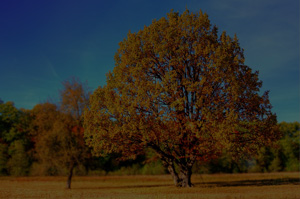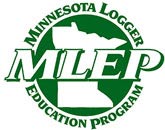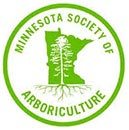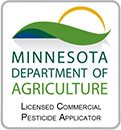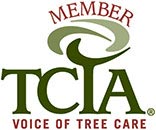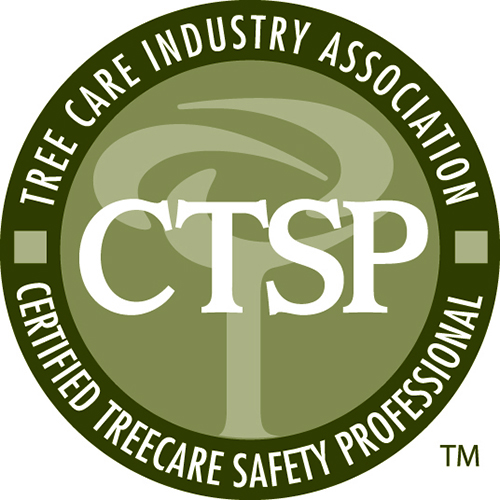Trees fall at some point. Whether during your lifetime or someone else's, it is natural for trees to die and eventually fall. And this is the risk that you take when you have a large tree on or near your property.
Some trees are obvious. You can see the rot and decay and without extensive research, it is known that they will fall in short time. But other trees can look completely healthy and topple over without notice. Above ground, the tree may look fine. But below ground, the tree can be in bad shape. Dead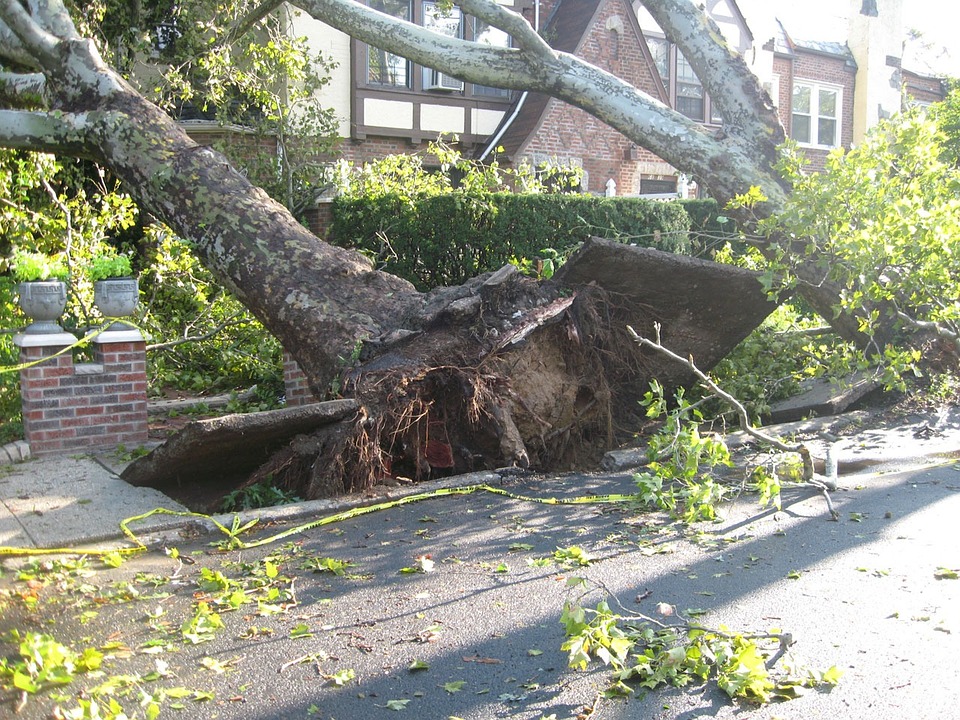 and decomposing roots will affect tree stabilization and will cause the tree to quickly lose its strength. Factor in a timely storm, straight-line winds, or tornado and a healthy tree can easily end up on the ground.
and decomposing roots will affect tree stabilization and will cause the tree to quickly lose its strength. Factor in a timely storm, straight-line winds, or tornado and a healthy tree can easily end up on the ground.
What to do when your tree falls?
First, make sure that everyone is safe. Once that is done assess the situation for other dangerous situations--like down power lines. If this is the case, stay away and call the power company. Treat any power line or cable as if it were live, and stay away until proper authorities can address the situation.
If a tree falls on your house, a number of factors will play a role in determining “how bad” the situation is and how much damage has been caused. Many tasks will seem obvious and more urgent than others but here is a list to make sure you and your family are safe if this happens to you.
- Evacuate Immediately: If you are on a second or third story it is best to the main floor as quickly, and safely, as possible. Make sure everyone is accounted for and safe.
- Call for Help: You may be in a situation where the tree is blocking your exit from the home, call for help. Emergency services if necessary and then others as noted below.
- Protect the Inside of your Home: Roof damage may expose your home to weather elements. Take steps to cover anything that could be damaged by moisture. Then be sure to secure valuables and lock the doors.
Call an Arborist
After the scene is safe, call a Certified Arborist and have them out to assess the situation. Arborists are highly trained when it comes to working with equipment and complex tree situations. They are knowledgeable when it comes to standard tree removal practices and have the experience necessary to get the job done right. It is important to remember that good tree work by qualified professionals is worth the additional expense. Professional prices should include liability and workman’s compensation insurance. And may also include the use of specialty equipment--such as cranes and loaders or hardware that needs to be installed in the tree. If you feel an estimate is too high, ask what it includes. You may be getting much more than what can be offered by a less expensive tree service.
Read More: What’s the Difference Between a Landscaper and an Arborist?
Call your insurance company
If the fallen tree caused damage, call your insurance company as well. Have the insurance adjuster out before any tree removal work begins. The insurance adjuster will have to file their report for any claim work and need to observe the full extent of the damage. If possible, have the Adjuster and Arborist out at the same time.
Regular homeowner’s insurance covers damage to your home from fallen trees. And insurance will pay to remove trees that fall and damage your property.
Call a contractor
In some cases, a tree or branch may puncture a hole in the roof or side of the house. When this happens it must be removed promptly, so call a contractor and have them repair the damage so that your home is waterproof and livable. In cases of extreme damage where your house is unlivable, take measures to secure doors and windows so your house isn’t a target for looting.
Watch out for tree removal solicitors
![]() When storms occur and many trees are down it is common for businesses to go door-to-door marketing their services. This is an easy way for them to drum up new business. Keep in mind that removing a tree from a structure is serious business. Certified Arborists are trained in advanced rigging and understand the forces involved. A single branch cut in the wrong place can lead to serious injury by inexperienced personnel. The insurance company will not always cover additional expenditures and will want the job done right, by professionals. In a worst-case scenario, the Homeowner will be held liable if the company hired does not have insurance, causes more damage, or even sustains injuries and doesn’t have workman’s compensation insurance.
When storms occur and many trees are down it is common for businesses to go door-to-door marketing their services. This is an easy way for them to drum up new business. Keep in mind that removing a tree from a structure is serious business. Certified Arborists are trained in advanced rigging and understand the forces involved. A single branch cut in the wrong place can lead to serious injury by inexperienced personnel. The insurance company will not always cover additional expenditures and will want the job done right, by professionals. In a worst-case scenario, the Homeowner will be held liable if the company hired does not have insurance, causes more damage, or even sustains injuries and doesn’t have workman’s compensation insurance.
What if the damage is from a tree that fell from your neighbor’s property?
If a healthy tree falls during a storm from “natural causes,” whoever has the damage will pay for it. Meaning that when a neighbor’s tree falls on your house, you and your insurance company will pay for the damage.
What if my tree falls on the neighbor's property?*
When your tree falls due to "natural causes" and damages your neighbor's property, their insurance company will pay for the damage.
However, if the tree was clearly dead or dying or if you were warned that the tree was unhealthy, you will be responsible for the damage. Homeowners have the responsibility to take steps to prevent damage from dying, diseased, or unstable trees on their property. In these cases, you are liable for the damage and your insurance company will have to pay for the damages.
*All parties are advised to check with their insurance company as every policy is different and may contain clauses that would alter this situation.
Prevent trees from falling
The best thing you can do when your tree looks like a fall hazard is to call your local tree care company. A certified arborist will be able to tell you right away if the tree needs to be removed, treated, or cabled. This way you don’t have a large liability standing on your property just waiting for the next storm to come by.
The cost of tree trimming services can vary depending on a multitude of factors. Read More: The Average Cost of Tree Trimming Services
Be proactive about dying trees
Pay attention to your neighbor’s trees, as well. If their tree threatens your home, let them know. If they don’t respond, send a certified letter to them and take pictures of the tree. Then, when the tree does fall and causes damage, you have proof that your neighbor knew about it.
